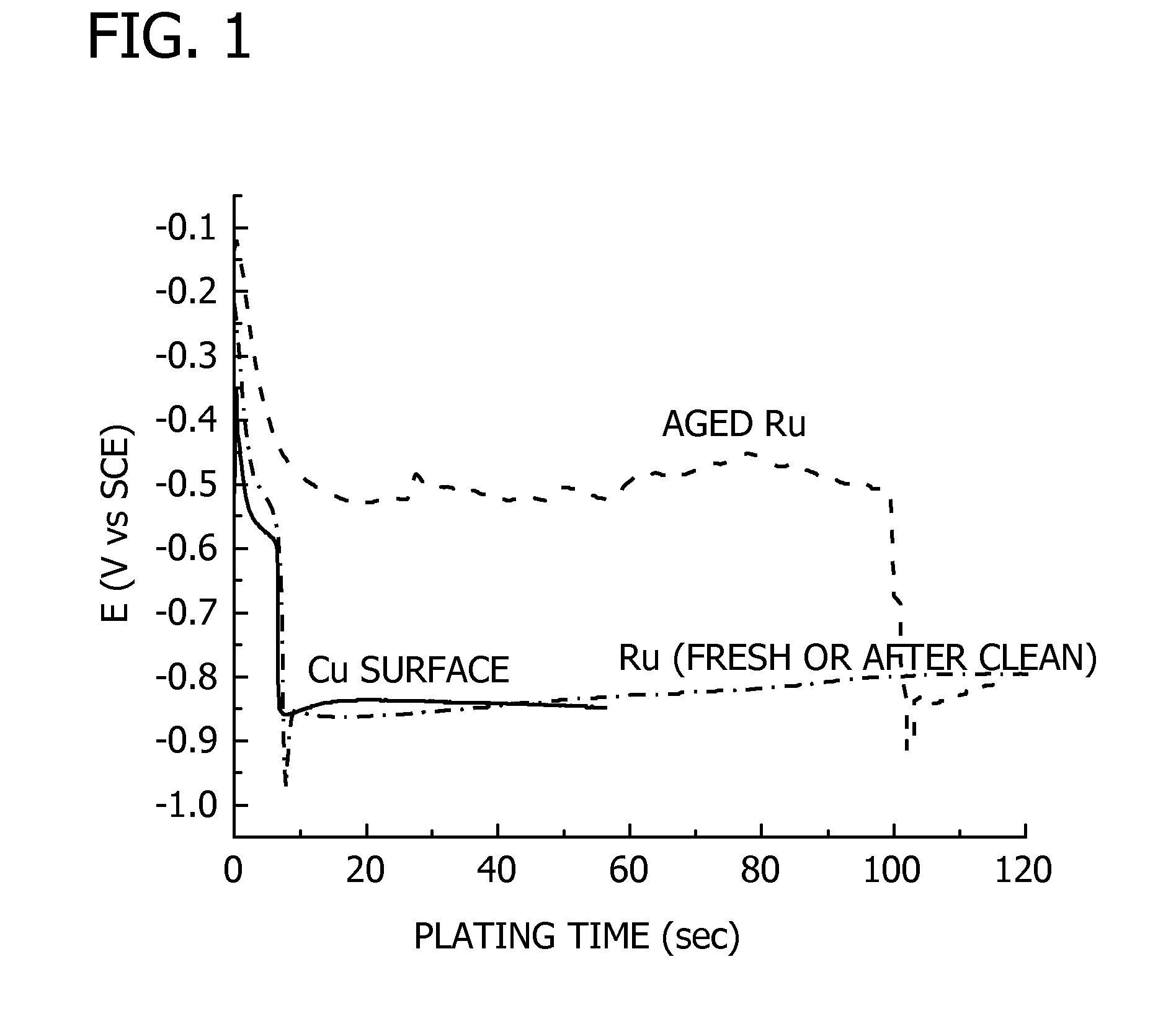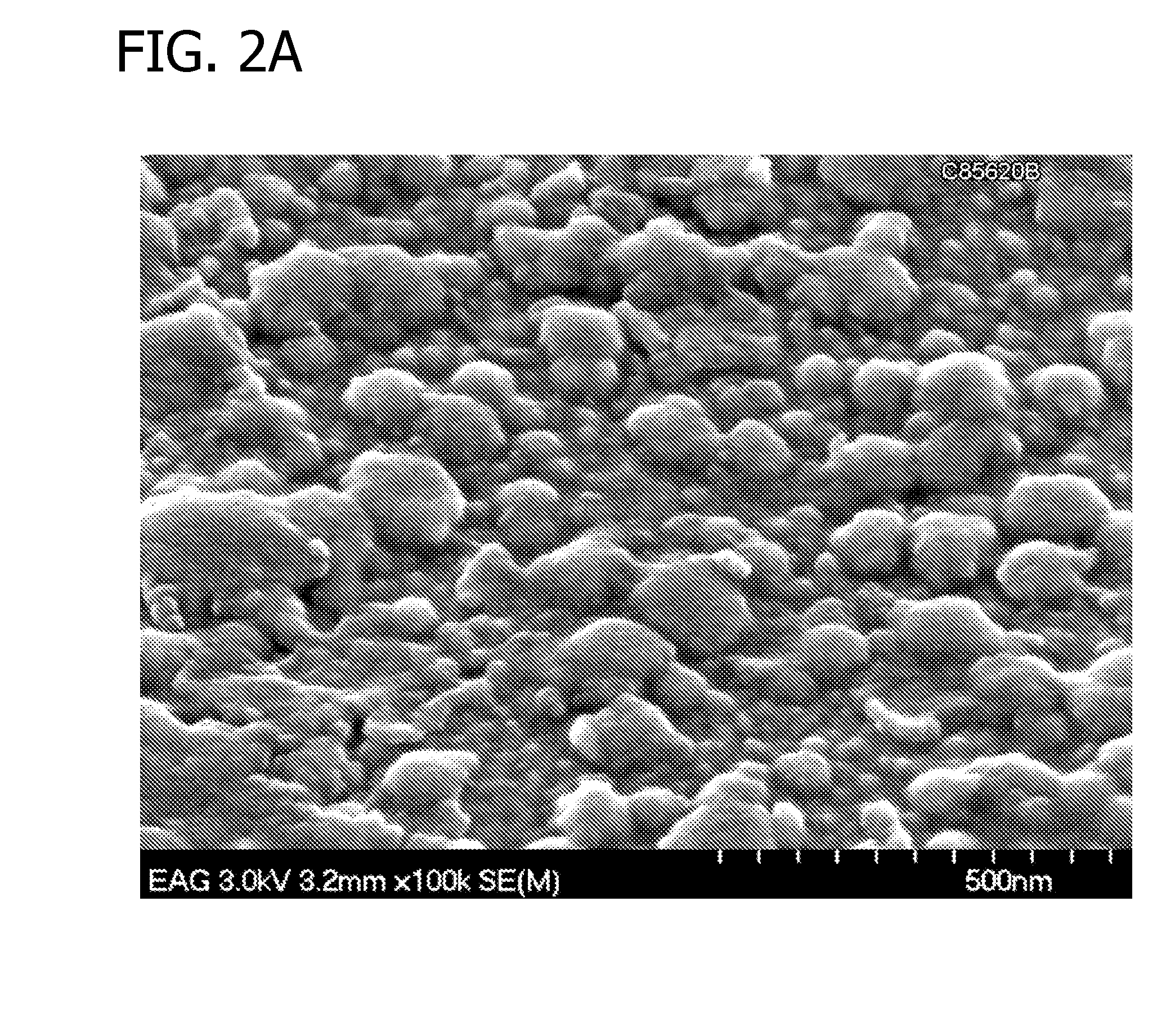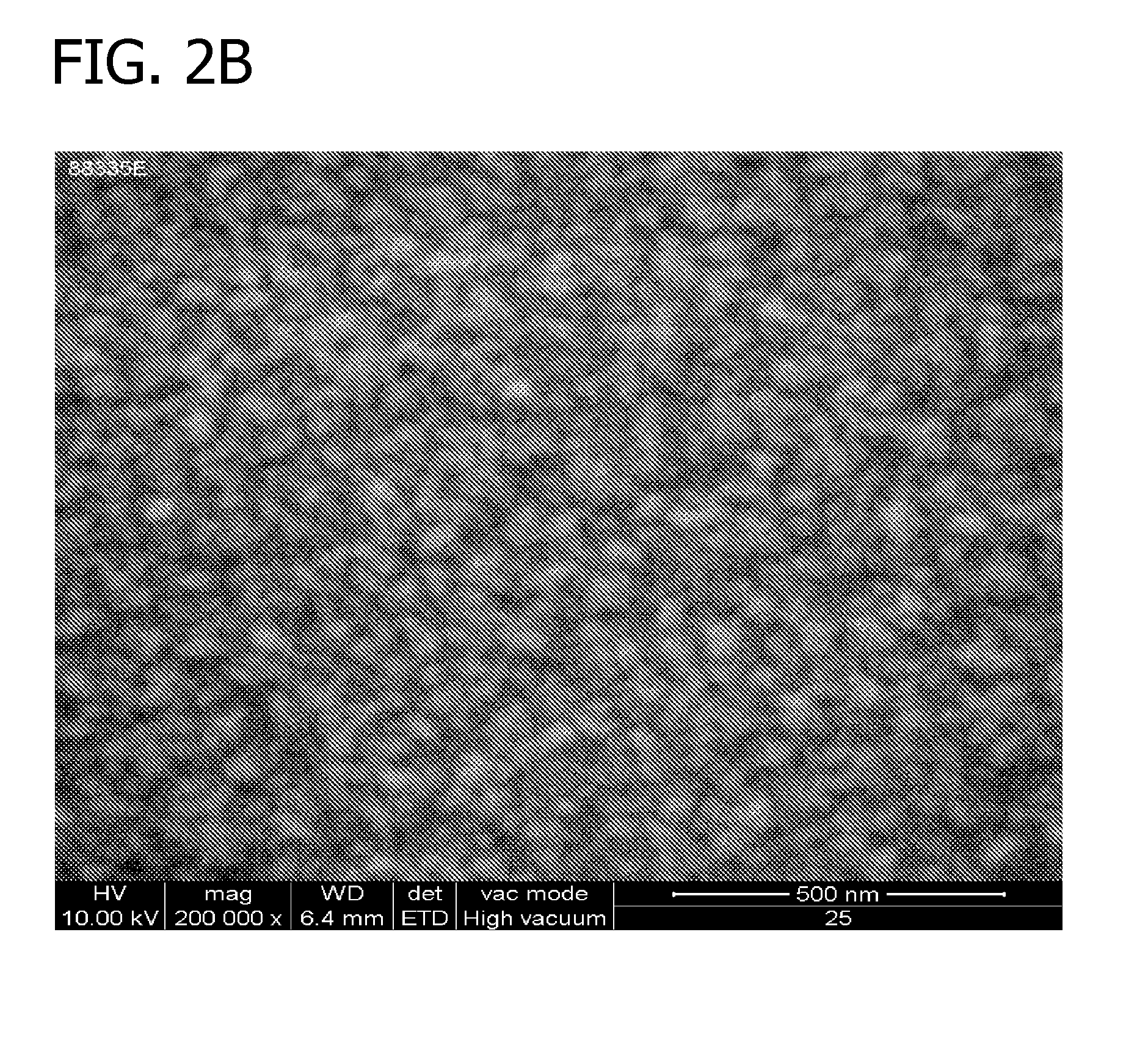Surface preparation process for damascene copper deposition
a preparation process and damascene technology, applied in the direction of basic electric elements, semiconductor/solid-state device manufacturing, electric devices, etc., can solve the problems of tantalum nitride being negative, affecting the electrical characteristics of the electrodes, and poor adhesion of the copper layer deposited thereon
- Summary
- Abstract
- Description
- Claims
- Application Information
AI Technical Summary
Benefits of technology
Problems solved by technology
Method used
Image
Examples
example 1
Pre-Treatment Composition
[0074]A pre-treatment composition was prepared to contain the following components and approximate concentrations:
[0075]Dimethylamine Borane (100 g / L)
[0076]CALFOAM® EA-603 (100 g / L)
[0077]Balance water 1 liter.
example 2
Pre-Treatment Composition
[0078]A pre-treatment composition was prepared to contain the following components and approximate concentrations:
[0079]Hypophosphorous acid (20 g / L)
[0080]Dimethyl amine Borane (2 g / L)
[0081]Diethylamine (20 g / L)
[0082]Balance water 1 liter.
example 3
Study of Induction Time of Electroless Copper Deposition on Various Seed Layers
[0083]The induction time of electroless copper deposition on ruthenium seed layers treated with the composition of Example 1 were measured using open-circuit potential change with time using a potentiostat and Standard Calomel Electrode (SCE) on blanket substrates.
[0084]FIG. 1 is a graph showing the induction time of electroless copper deposition on ruthenium substrates (freshly prepared and aged) compared to that on a PVD copper substrate. Electroless copper deposition was rapidly initiated on freshly prepared ruthenium substrates and on the copper surface. A ruthenium surface aged for 9 months in air (humidity was not controlled) exhibited delay deposition initiation (over 100 seconds), which is thought to be due to oxidation of the ruthenium surface. In some cases, electroless copper deposition did not initiate on aged ruthenium surfaces.
[0085]The aged ruthenium substrate was pre-treated prior to elect...
PUM
| Property | Measurement | Unit |
|---|---|---|
| width | aaaaa | aaaaa |
| width | aaaaa | aaaaa |
| length | aaaaa | aaaaa |
Abstract
Description
Claims
Application Information
 Login to View More
Login to View More - R&D
- Intellectual Property
- Life Sciences
- Materials
- Tech Scout
- Unparalleled Data Quality
- Higher Quality Content
- 60% Fewer Hallucinations
Browse by: Latest US Patents, China's latest patents, Technical Efficacy Thesaurus, Application Domain, Technology Topic, Popular Technical Reports.
© 2025 PatSnap. All rights reserved.Legal|Privacy policy|Modern Slavery Act Transparency Statement|Sitemap|About US| Contact US: help@patsnap.com



